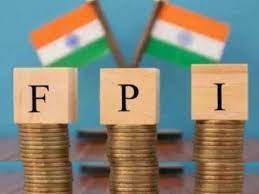Foreign portfolio investors (FPIs) infused ₹13,397 crore into Indian government securities under the Fully Accessible Route (FAR) in October — marking the highest monthly inflow in seven months, according to data from the Clearing Corporation of India (CCIL).
Market participants attributed the surge to a stable rupee, favorable interest rate differentials, hopes of a trade deal, and prospects of further monetary easing. By comparison, FPIs had invested ₹8,333 crore in September, bringing total inflows to ₹20,916 crore for the second quarter (Q2).
The total FPI holding in government securities rose to a record ₹3.17 lakh crore in October.
“The increase in FPI inflows is mainly because yields have risen over the months, making Indian bonds more attractive compared to other emerging markets,” said Gaura Sengupta, Chief Economist, IDFC FIRST Bank.
Following the US Federal Open Market Committee’s October 28–29 decision to cut rates by 25 basis points, the US benchmark rate now stands at 3.75–4%. Meanwhile, India’s 10-year government bond yield closed at 6.53%, compared to the 10-year US Treasury yield at 4.08%, offering a spread of around 245 basis points.
Sengupta added that the Reserve Bank of India’s proactive rupee management has reduced volatility, further improving investor confidence.
On October 15, the RBI intervened to curb speculative long positions, preventing the rupee from breaching the 89 mark and stabilizing it around 87. Though month-end import demand and the US Fed’s hawkish stance caused some weakening, the central bank’s actions reassured markets of its commitment to currency stability.
A treasury official at a foreign bank noted that the domestic bond market outlook improved after the RBI’s October policy, which hinted at potential room for further easing. Optimism over an impending trade deal also eased rupee depreciation concerns, boosting foreign inflows during the month.

